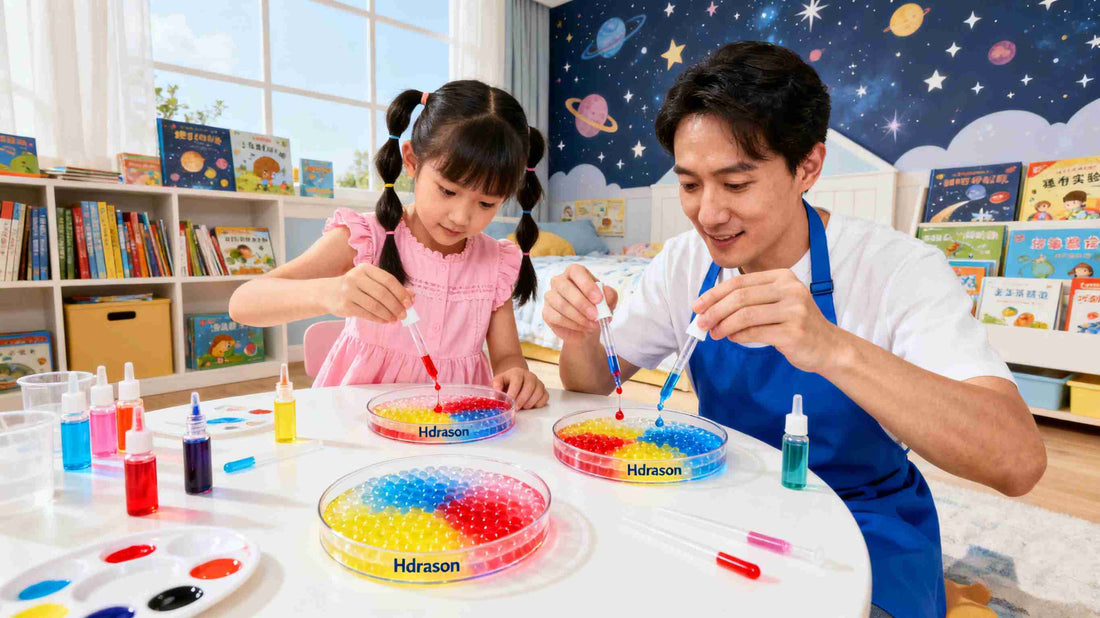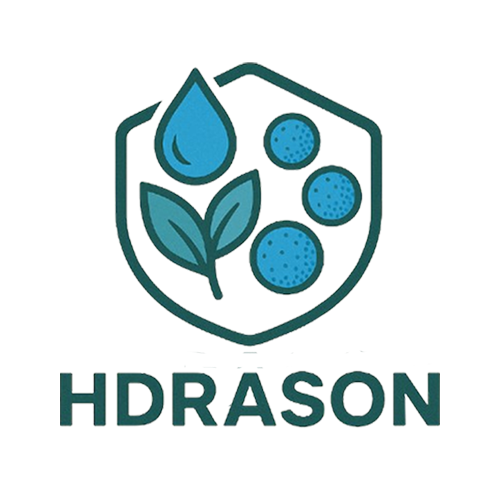
Hdrason Water Bead Science Experiment: Exploring Polymer Properties and Children's STEM Education
Share
Hdrason water beads are not only a fun tool but also an ideal material for children's STEM education. Their unique polymer properties provide the foundation for a series of engaging science experiments, helping children understand scientific principles through hands-on practice and fostering a spirit of inquiry and innovation.
The core scientific property of water beads lies in their polymer structure. These tiny beads are made of sodium polyacrylate, which contains numerous hydrophilic groups within its molecular chain. When exposed to water, these groups hydrogen bond with water molecules, forming a three-dimensional network structure that absorbs and retains large amounts of water. This process can be demonstrated visually with a simple experiment: place dry water beads in clean water and observe their gradual expansion. Children can record the changes in the size of the water beads over time and plot a growth curve to understand the basic concepts of water absorption dynamics.
The osmotic pressure experiment is another fascinating project. A fully expanded water bead is placed in both fresh water and salt water to observe its volume change. In the salt water, the difference in osmotic pressure causes the bead to shrink and release water. This experiment not only demonstrates the principle of osmosis but also leads to discussions about semipermeable membranes and concentration gradients. By measuring the change in diameter of a water bead in different solutions, children can learn quantitative analysis and data recording techniques.
Exploring density is equally interesting. By adjusting the water content of a water bead, its density can be changed, demonstrating the principle of floating and sinking. Children can try to suspend a water bead in a specific liquid to understand the concept of density matching. They can also adjust different colored water beads to different densities and observe their stratification in a container, similar to the sedimentation process in geology, but in an accelerated and visual way.
Optics experiments demonstrate another scientific application of water beads. Their spherical shape makes them natural convex lenses. Children can use water beads to focus sunlight and observe their ability to ignite paper, or use them to observe tiny objects and understand the principle of magnification. These experiments provide intuitive demonstrations of the basics of optics.
For older children, more complex experiments can be conducted. For example, they can study the effect of temperature on water absorption rate or explore the differences in the expansion of water droplets due to different water qualities (tap water, distilled water, or mineral water). These experiments cultivate skills in hypothesis formulation, variable control, and data analysis, laying the foundation for future scientific research.
Water droplet experiments require special attention to safety. Ensure that children conduct experiments under adult supervision to prevent accidental ingestion or inhalation of water droplets. Use tools rather than hands for certain experiments, and keep the work area clean to prevent slips. Furthermore, teach children how to properly handle experimental materials and cultivate environmental awareness.
The value of water droplet science experiments lies not only in imparting knowledge but also in cultivating scientific thinking. Through hands-on practice, children learn the scientific method of observation, questioning, experimentation, and conclusions. This experiential learning is more profound and lasting than simply theoretical explanations.
Furthermore, water droplet experiments can be easily integrated into home or classroom settings. The materials required are simple and readily available, and the activities are flexible and suitable for children of different ages and abilities. Many experiments can also be expanded into long-term projects, such as continuously monitoring the changes in water droplets under different environments.
In short, Hdrason water beads provide rich possibilities for children's STEM education. Through these interesting and educational experiments, children not only learn scientific knowledge but also cultivate critical thinking and problem-solving skills, laying a solid foundation for future learning and development.
